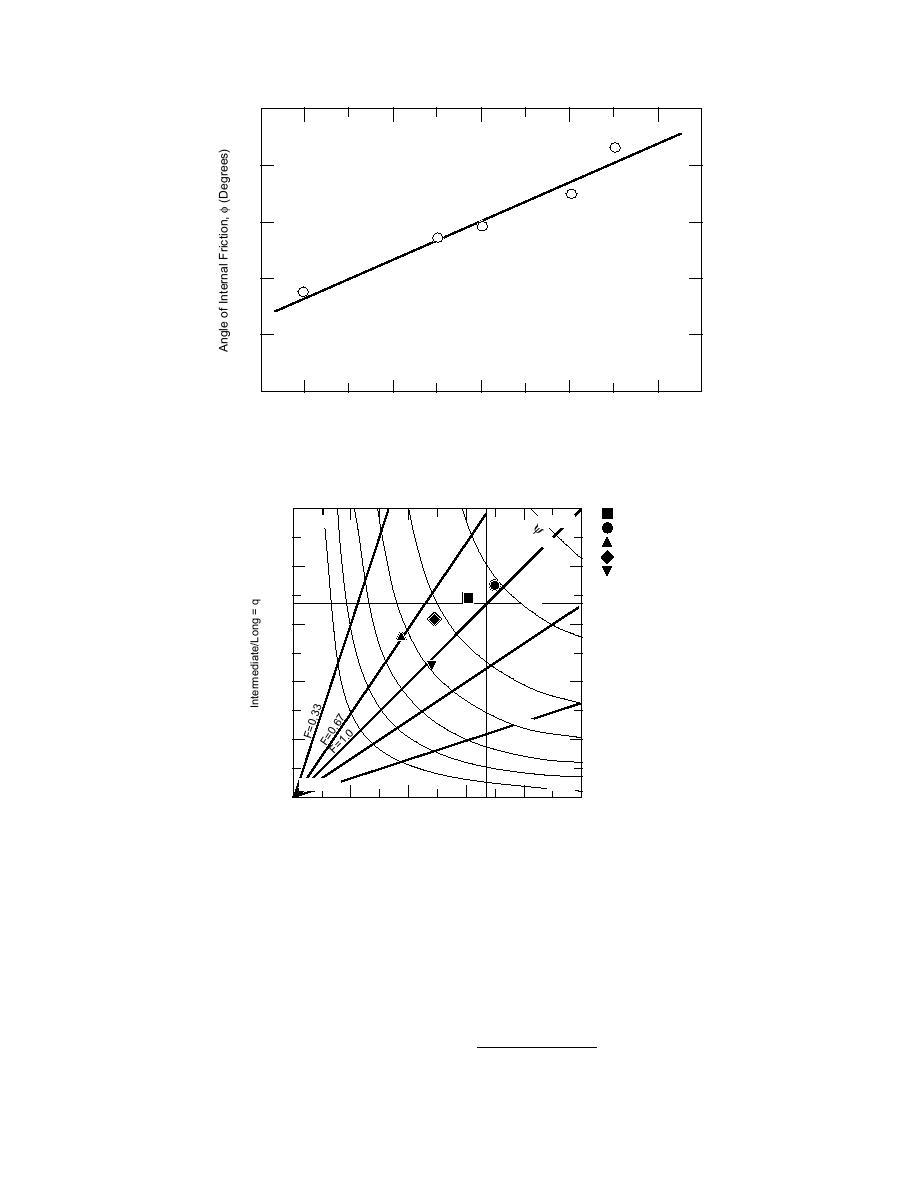
45
44
43
42
41
40
0.70
0.60
1.00
0.90
0.80
Rounded
Angular
Sphericity and Angularity
Figure 20. Effect of sphericity and angularity on the angle of internal friction.
(After Holubec and Wilson 1970.)
1.0
Granite
DISC
CUBIC
Gravel
=
0.
Shale
95
Quartzite
0.8
ψ
=
0.
9
0.6
ψ=
0.4
0.8
ψ=
0.7
ψ =0
0.2
5
.6
1.
ψ = 0.5
F=
.0
ψ = 0.4
F=3
BLADE
ROD
0.0
0.0
0.2
0.4
0.6
0.8
1.0
Short/Intermediate = p
Figure 21. Shape classification of aggregates. (After Barksdale and Itani 1994.)
The test materials, shape, and surface charac-
men diameter be at least six to seven times the
teristics as reported by Barksdale and Itani (1994)
maximum particle size, to minimize the bound-
are shown in Figure 21. The samples were com-
ary effects by the large aggregates. Scalping of
pacted using a vibratory compactor at the opti-
large aggregates and replacing equivalent
mum moisture content. The test specimens were
amounts of smaller aggregates changes the over-
152 mm in diameter and 305 mm in height. These
all structure of the material. Dawson* reported
dimensions are acceptable provided the maxi-
that in unreported experiments at the University
mum size of the aggregates is no more than 25
of Nottingham, similar results were obtained on
mm. Sweere (1990) found that testing aggregates
dry specimens in which the grading curve was
containing 51-mm particles in a 152-mm-diameter
mold produced inconsistent results. He recom-
* Personal communication, Andrew Dawson, University of
mended that, for large particle sizes, the speci-
Nottingham, United Kingdom, 1992.
18



 Previous Page
Previous Page
